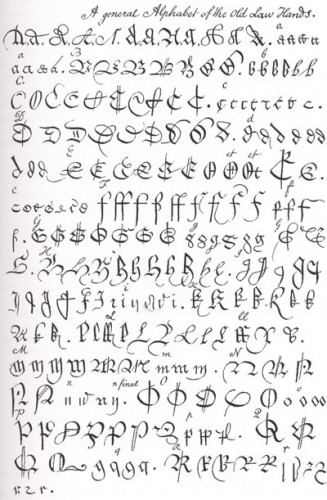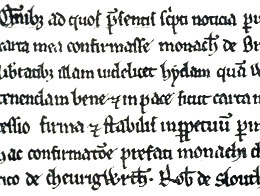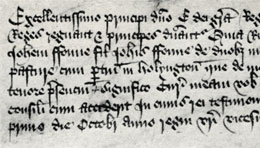Handwriting has evolved constantly throughout the centuries, which can make reading ancient writing (known as palaeography) very difficult.
Each letter of the alphabet may be written differently depending on who wrote the document or the period it’s from. Further complications come from people recording events in a rush, being unable to spell correctly, using abbreviations… it’s no surprise that help will sometimes be needed when translating old handwriting.
Useful Reading Tips
- Look for obvious words like first names, the, and etc… to see how certain letters are written. You can then tell what those letters are on longer words.
- Look for the most important words first, for example an ancestor’s name. Then read the sentences around it. Otherwise you may spend hours on a document before realising none of it is relevant.
- If you are in a library or somewhere else with a time constraint, photocopy the document so you can translate it at your leisure.
Weird Looking Letters
- c can have a vertical line through it

- d may have a curly top

- e is sometimes written backwards
- A capital F can look like a double f

- r often descends below the baseline, and the curve of the r can also start from its base – the image to the right says freely grynd

- s can look like an f, either with no horizontal bar, or sometimes just with a horizontal bar to the left of the vertical stroke. It is distinguishable from an f, which always has the horizontal bar passing through the vertical stroke on both sides. For example mofs should be read as moss and feynt as seynt (saint). The image to the right says shame

- u and v are often used interchangeably right up until the early 18th century, as are i and j. So you may see words which today would be spelt wrong – uery and vpon being common examples. The meaning is as you would expect, very and upon, and historically those spellings would be perfectly acceptable.
- The letter w can be written very lavishly, with curls and loops.
- You may come across the Middle English letter yogh (Ȝ). This usually represents a y, or occasionally a g. It is not uncommon in documents of the 14th and 15th centuries and can sometimes looks like a z.
Where ‘Ye’ Comes From
The word ye is a Middle English word for the. It is actually a corruption of the obsolete letter Þ, called thorn, followed by a superior e. Thorn had the sound of th, so Þe sounded just the same as the. Over time people began to write Þ as a y, leading us to take the supposed pronunciation as ye, however the word has always been pronounced the, regardless of its spelling. You may also see Þ followed by a superior t, meaning that.

Types of Old Handwriting
There have been many different styles of handwriting in Britain throughout the centuries, each evolving around a particular purpose and developing its own unique characteristics.
Book Hand
This evolved post-Conquest into a hand used for literary and liturgical manuscripts. It features regular, well spaced & unjoined letters, making this hand very easy to read. This would later develop into the type used in the first printers.

Chancery Hand
This was a business hand used by the royal Chancery at Westminster, mainly between the 14th and 17th centuries. Its main characteristics are rounded letters, long descenders and short ascenders.

Court Hand
Tall, exaggerated letters packed closely together characterise court hand. It was used by law courts, lawyers and clerks throughout the middle ages and up to the middle of the 18th century. It was banned in 1731 due to being difficult to read. The book Court-Hand Restoredby Andrew Wright comes highly recommended for deciphering this, with pages and pages showing the way each letter of the alphabet has been written, ordered by profession and era. It is an excellent guide for reading records, deeds & similar material from before the 19th century. You can see a page from this book opposite, which gives some idea of the variation you will encounter.
Secretary Hand
Used instead of the often illegible court hand, this hand looks fairly similar to modern handwriting, although that is not to say it’s easy to read! Its use was common in the 16th and 17th centuries.
Examples of English Handwriting, 1150-1750 by Hilda Grieve shows these styles of handwriting as well as many others, and is invaluable when deciphering old documents.
